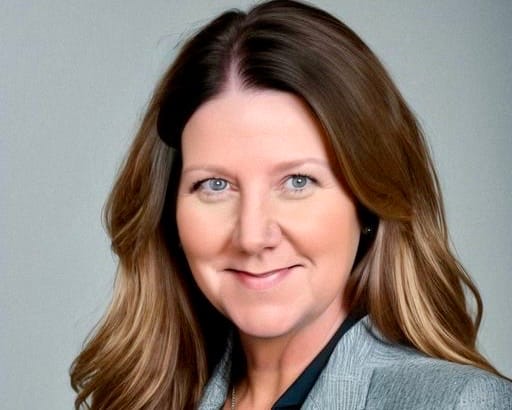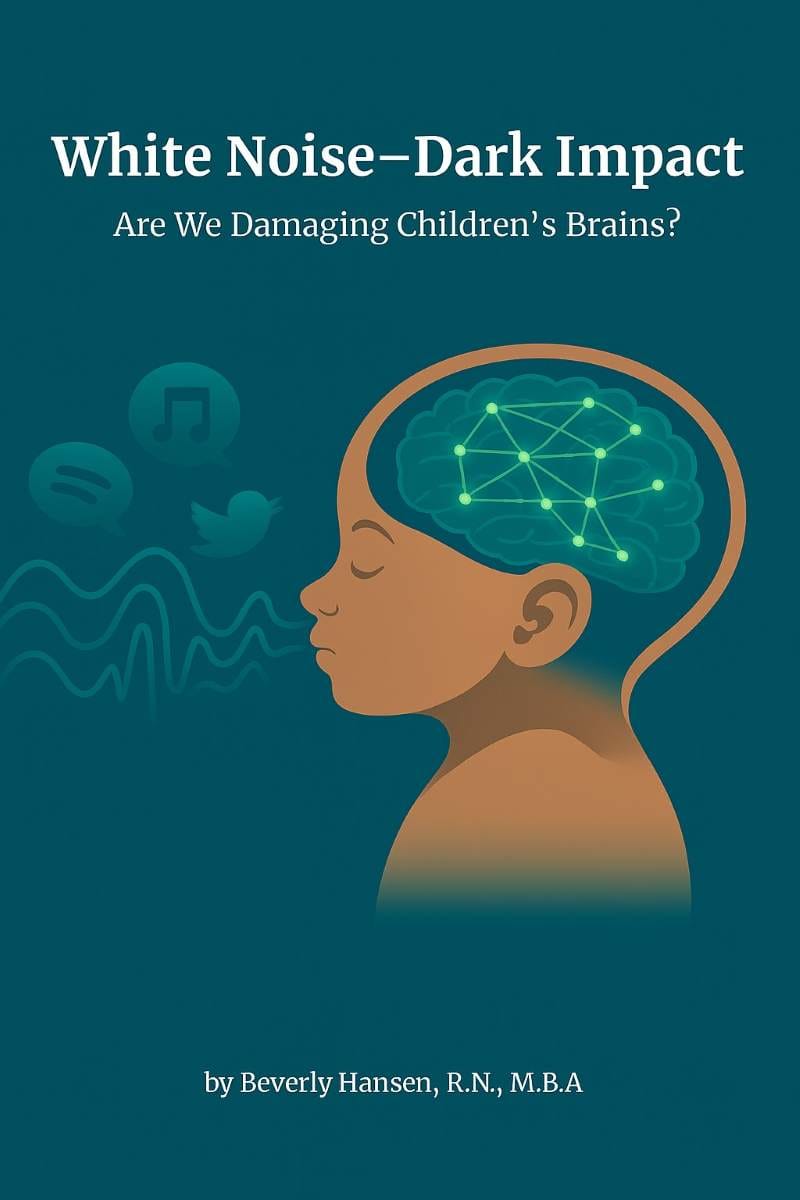White Noise, Dark Impact: Rethinking the Soundtrack of Infant Development
“No long-term studies confirm white noise is safe for infant brain development…if there’s a risk to brain development…we must act”-Beverly Hansen

Guest Opinion By Beverly Hansen, RN, MBA
In homes across America, a quiet revolution is humming-literally. White noise machines, once niche sleep aids, have become nursery staples. Marketed as miracle solutions for restless infants and exhausted parents, these devices promise serenity. But beneath the soothing static lies a deeper concern: Are we trading developmental richness for artificial convenience?
As a Registered Nurse and healthcare strategist, I’ve spent decades optimizing health for individuals and populations. My book, White Noise–Dark Impact: Are We Damaging Children’s Brains? challenges the mainstream embrace of white noise and urges families to reconsider what babies truly need to thrive.
Emerging neuroscience reveals that the sounds surrounding infants, voices, music, environmental nuance are not just background. They are the architecture of future cognition, language acquisition, emotional regulation processing. When a child’s first soundtrack is engineered monotony, we must ask: Are we tuning out the world at the very moment they should be tuning in?
The First Three Years: A Critical Window
During the first three years of life, a baby’s brain forms up to one million new connections per second. These connections are shaped by experience, especially auditory experience. Every word spoken, every lullaby sung, every dog bark or door creak contributes to the brain’s ability to interpret, regulate, and respond to the world.
White noise machines, by masking these natural sounds, may interfere with this process. Research from Dr. Edward Chang’s lab at UCSF suggests that constant exposure to artificial noise can delay auditory organization, reduce cognitive function, and impair emotional development. In animal models, white noise exposure led to slower neural growth and diminished learning capacity. These findings should alarm every parent, pediatrician, and policymaker.
Sound, Stress, and the Brain’s Safety-First Principle
Babies come hard wired with the primal “safety-first” mechanism to detect environmental cues that signal non-conscious fight or flight. This is the emotional rational dynamics process. Natural sounds help build this system. But when white noise dominates the soundscape, the brain may struggle to differentiate meaningful signals. This can lead to auditory processing issues, stress dysregulation, and long-term behavioral challenges.
Children with ADHD or sensory sensitivities are especially vulnerable. For them, sound isn’t neutral, it’s either overwhelming or absent. White noise can exacerbate these extremes, making it harder for children to focus, sleep, or feel safe.
A Call for Discernment
On a Neuronoodle podcast in Jan, 2024, EEG expert Jay Gunkelman compares white noise to fingernails on a chalkboard for the brain. Why expose babies to such harsh sounds? It offers no developmental benefit and may disrupt language and emotional regulation. This isn’t anti-technology; it’s a plea for discernment. Let’s favor the rich soundscape of real life: music that boosts cognition, voices, nature’s rhythms, footsteps, sibling laughter. These sounds nurture emotionally resilient brains.
Importantly, no long-term studies confirm white noise is safe for infant brain development. Originally designed for adults in the 1960s, they entered the baby market around 2010. A 2023 review of 14 models found inconsistent sound levels, prompting calls for decibel regulation and The American Academy of Pediatrics warned of hearing risks. Stanford’s Dr. Konstantina Stankovic, in a podcast with Dr. Andrew Huberman, stressed that children’s ears are “tender” and prolonged exposure may harm hearing. With no long-term neurological data, we must follow the precautionary principle: If there’s a risk to brain development, even a small one, we must act.
Final Thoughts
Parenting is hard. But short-term convenience is not worth the risk to your precious baby. By turning off the machine, we reclaim something profound: the power of the brain that has served generations before us, the wisdom of nature, and the promise of healthy brain development.
Let’s reframe the conversation from “How do I get my baby to sleep?” to “What kind of brain am I building while they sleep?”
Because every soundscape is a story and our children are listening. They are decoding safety, learning emotional regulation, and building the scaffolding for future relationships. When we replace natural nuance with engineered hum, we deprive children of the very experiences that help them thrive.
So, let’s choose sound with intention. Let’s honor the biology of bonding and the brilliance of the developing brain. Let’s make space for laughter, lullabies, and the unpredictable beauty of real life.
The auditory environment we curate in infancy is not a passive backdrop, it is a formative force, shaping neural architecture, emotional rhythms, and lifelong cognitive habits.
Let us choose sound that nurtures, not numbs. Because the path forward isn’t silent, it’s thoughtfully sound.
Purchase the Book: https://stan.store/ClinicalBrainiacs/p/white-noisedark-impact
Connect with Beverly through her website: www.clinicalbrainiacs.com
Beverly Hansen, RN, MBA, is the founder and CEO of Clinical Brainiacs, a healthcare consulting firm known for driving innovation and transformation across the industry. With more than 20 years of experience in clinical care, executive leadership, and digital health strategy, Hansen specializes in value-based care, operational management, and healthcare innovation.
She has helped healthcare organizations and startups achieve measurable results—securing over $330 million in funding, managing multimillion-dollar contracts, and leading initiatives that improve clinical and operational outcomes.
A registered nurse with deep roots in acute care and an MBA from the University of Alabama at Birmingham, Hansen blends clinical insight with business strategy to help clients navigate complex healthcare challenges. She also serves on advisory boards supporting emerging healthcare solutions and technologies.
Opinions do not reflect the views and opinions of ALPolitics.com. ALPolitics.com makes no claims nor assumes any responsibility for the information and opinions expressed above.





